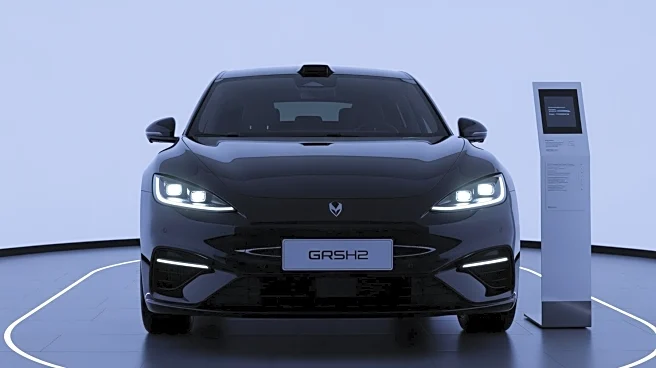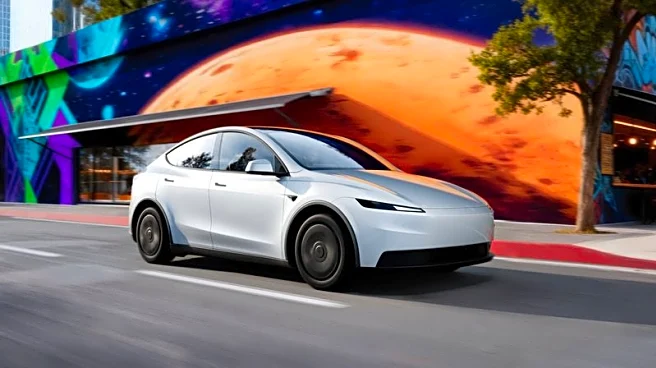What's Happening?
In September 2025, the Tesla Model Y emerged as the top-selling vehicle, surpassing competitors such as the Renault Clio and Dacia Sandero. This marks a significant rebound for Tesla, highlighting the Model Y's strong market performance. The automotive
industry is witnessing shifts as companies like GM adjust their strategies in response to changing market dynamics, including tariffs and evolving electric vehicle (EV) strategies. GM, for instance, is reassessing its BrightDrop electric vans and the future of its CAMI plant, reflecting broader industry trends towards optimizing EV production and addressing tariff impacts.
Why It's Important?
The resurgence of the Tesla Model Y in sales underscores the growing consumer preference for electric vehicles, which is reshaping the automotive market. This trend is significant for the U.S. economy as it influences manufacturing strategies, employment, and technological innovation within the automotive sector. Companies like GM are adapting by reevaluating their production capacities and product offerings, which could lead to shifts in employment and investment in EV technologies. The competitive landscape is also intensifying, prompting traditional automakers to innovate and potentially collaborate to maintain market share.
What's Next?
As the automotive industry continues to evolve, companies are likely to focus on enhancing their EV offerings and optimizing production processes. GM's decision to reassess its BrightDrop vans and CAMI plant suggests potential strategic shifts that could influence future product lines and manufacturing locations. Stakeholders, including investors and policymakers, will be closely monitoring these developments, as they could impact regulatory frameworks, investment flows, and the broader economic landscape. The industry's response to tariffs and market demands will be crucial in shaping its trajectory in the coming years.














